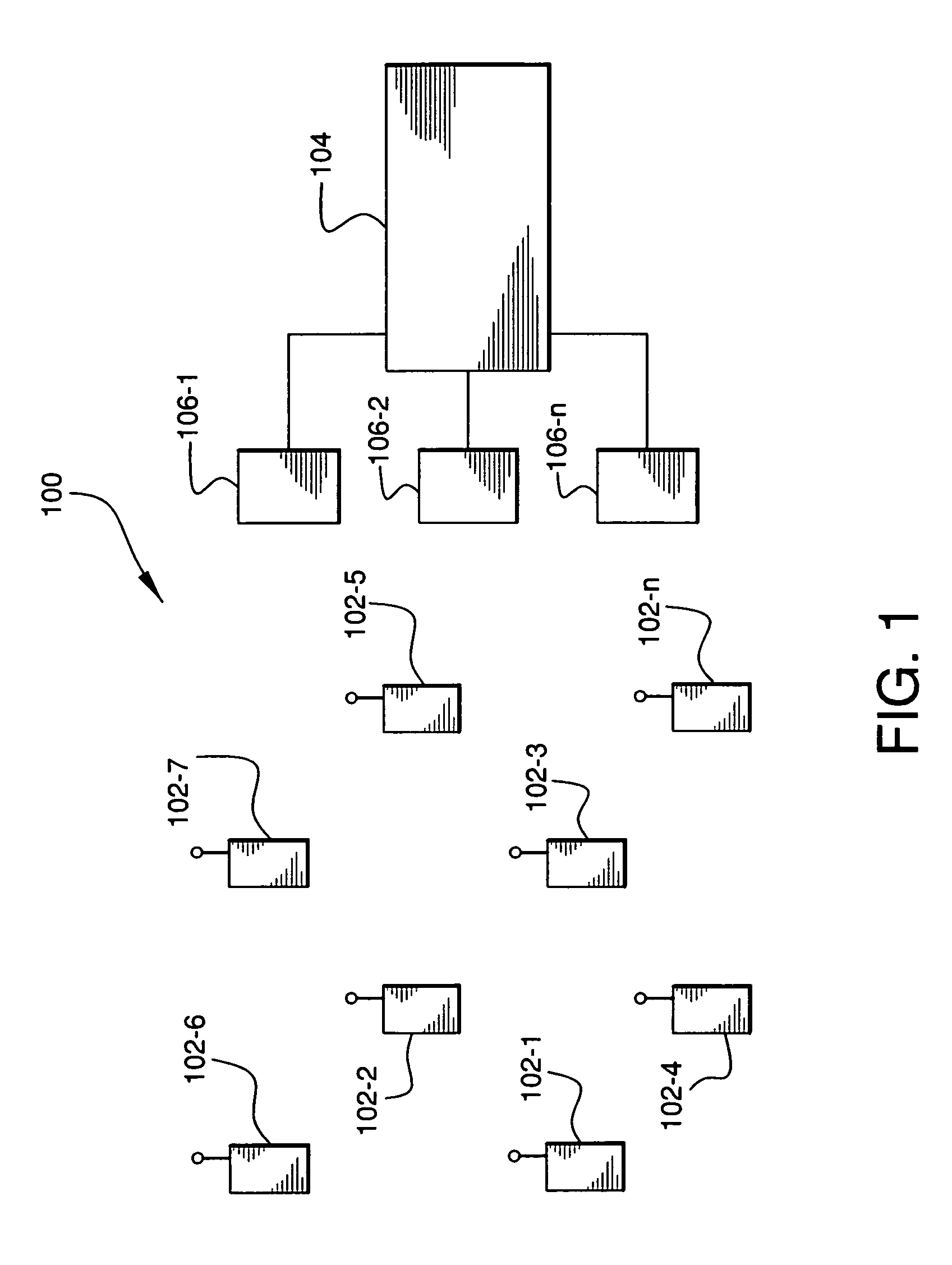System and method for providing a congestion optimized address resolution protocol for wireless ad-hoc networks
- Summary
- Abstract
- Description
- Claims
- Application Information
AI Technical Summary
Benefits of technology
Problems solved by technology
Method used
Image
Examples
Embodiment Construction
[0019]FIG. 1 is a block diagram illustrating an example of an ad-hoc packet-switched wireless communications network 100 employing an embodiment of the present invention. Specifically, the network 100 includes a plurality of mobile wireless subscriber devices 102-1 through 102-n (referred to generally as subscriber devices 102), and a fixed network 104 having a plurality of access points 106-1, 106-2, . . . , 106-n, for providing the subscriber devices 102 with access to the fixed network 104. The fixed network 104 includes, for example, a core local access network (LAN), and a plurality of servers and gateway routers, to thus provide the subscriber devices 102 with access to other networks, such as the public switched telephone network (PSTN), the Internet or another wireless ad-hoc network.
[0020]The subscriber devices 102 are capable of communicating with each other directly, or via one or more other subscriber devices 102 operating as a router or routers for data packets being se...
PUM
 Login to View More
Login to View More Abstract
Description
Claims
Application Information
 Login to View More
Login to View More - R&D
- Intellectual Property
- Life Sciences
- Materials
- Tech Scout
- Unparalleled Data Quality
- Higher Quality Content
- 60% Fewer Hallucinations
Browse by: Latest US Patents, China's latest patents, Technical Efficacy Thesaurus, Application Domain, Technology Topic, Popular Technical Reports.
© 2025 PatSnap. All rights reserved.Legal|Privacy policy|Modern Slavery Act Transparency Statement|Sitemap|About US| Contact US: help@patsnap.com



